Abstract
1 The effects of the thromboxane synthetase inhibitor dazoxiben (UK 37248) on haemodynamics, blood gases, thromboxane and prostacyclin release and on arrhythmias were examined in anaesthetised greyhounds subject to acute coronary artery occlusion and reperfusion.
2 Ten minutes after the administration of UK 37248 2 mg/kg intravenously, the plasma concentration of thromboxane B2 in the coronary sinus was significantly reduced whereas the 6-keto-prostaglandin F1α concentration was increased.
3 UK 37248 did not significantly alter the number of arrhythmias or the incidence of ventricular fibrillation resulting from coronary artery occlusion. There was evidence, however, that in some drug-treated animals there may have been incomplete inhibition of thromboxane synthesis during coronary artery occlusion.
4 A further dose of 1 mg/kg UK 37248 was administered intravenously 5 min before the release of the 40 min coronary artery occlusion. Seven out of eight control dogs died in ventricular fibrillation following reperfusion whereas only one out of eight drug-treated animals fibrillated.
5 This latter result suggests that thromboxane may be an important factor in reperfusion induced ventricular fibrillation and that dazoxiben may be a useful drug in clinically related situations.
Full text
PDF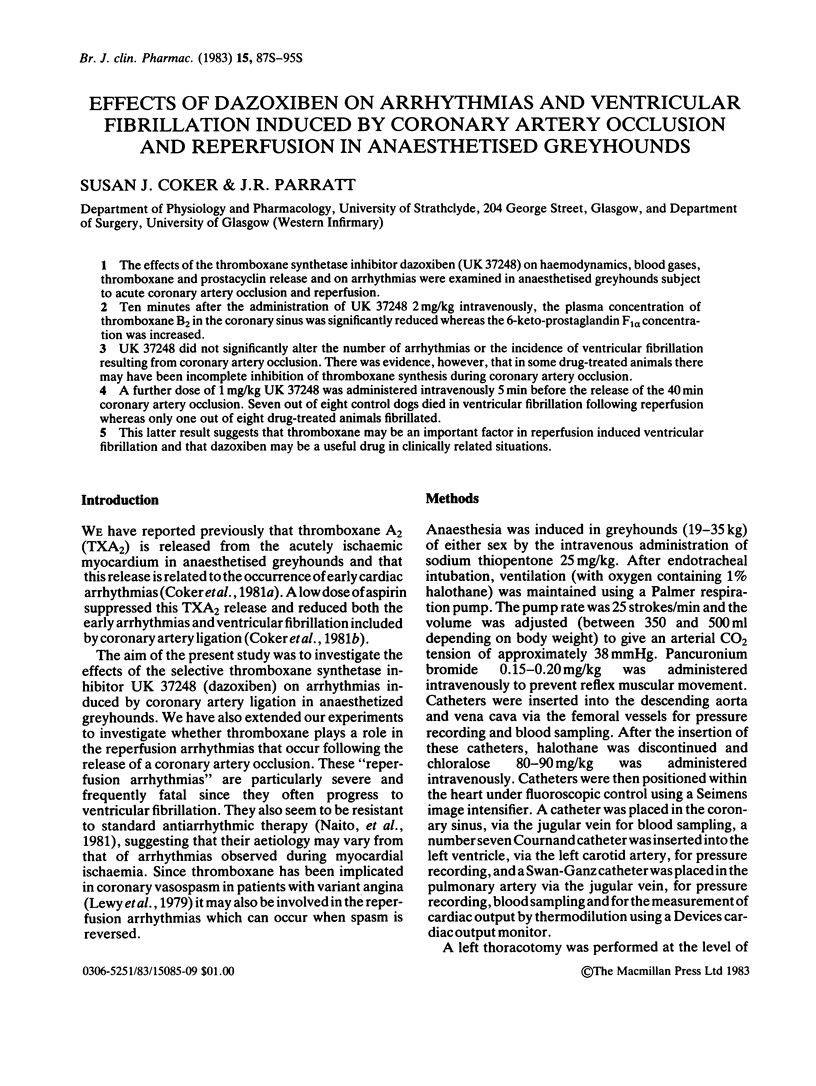
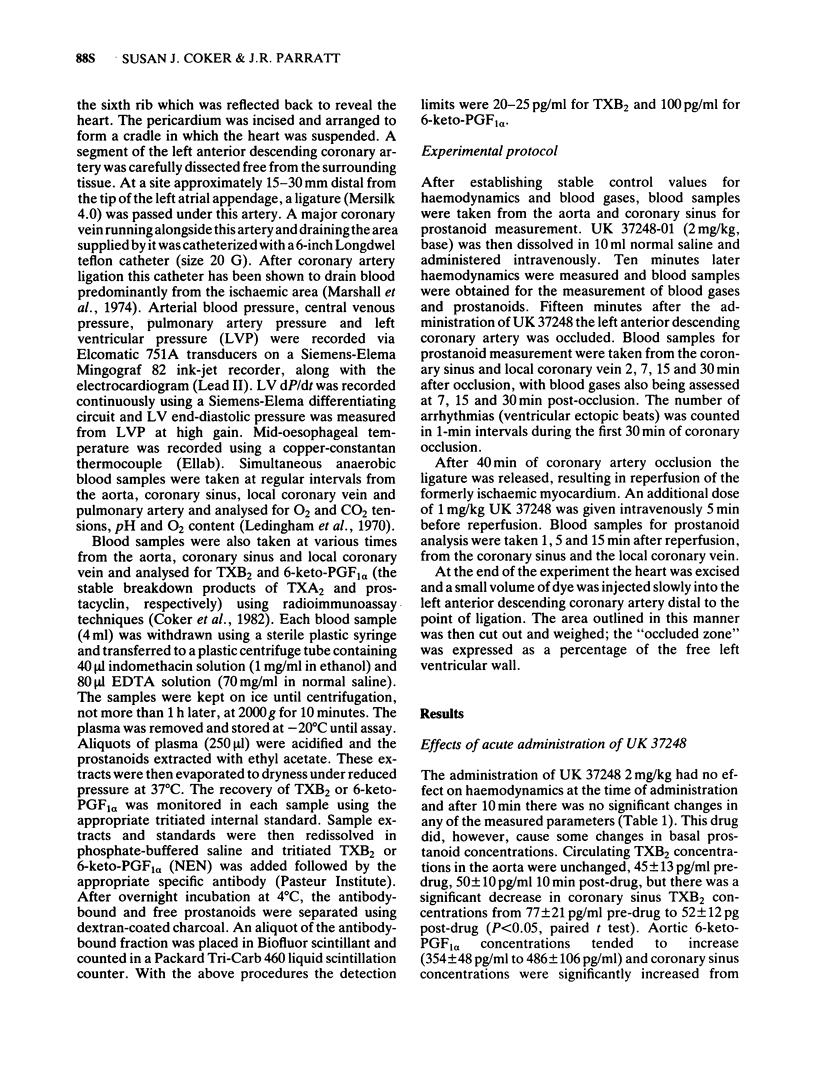
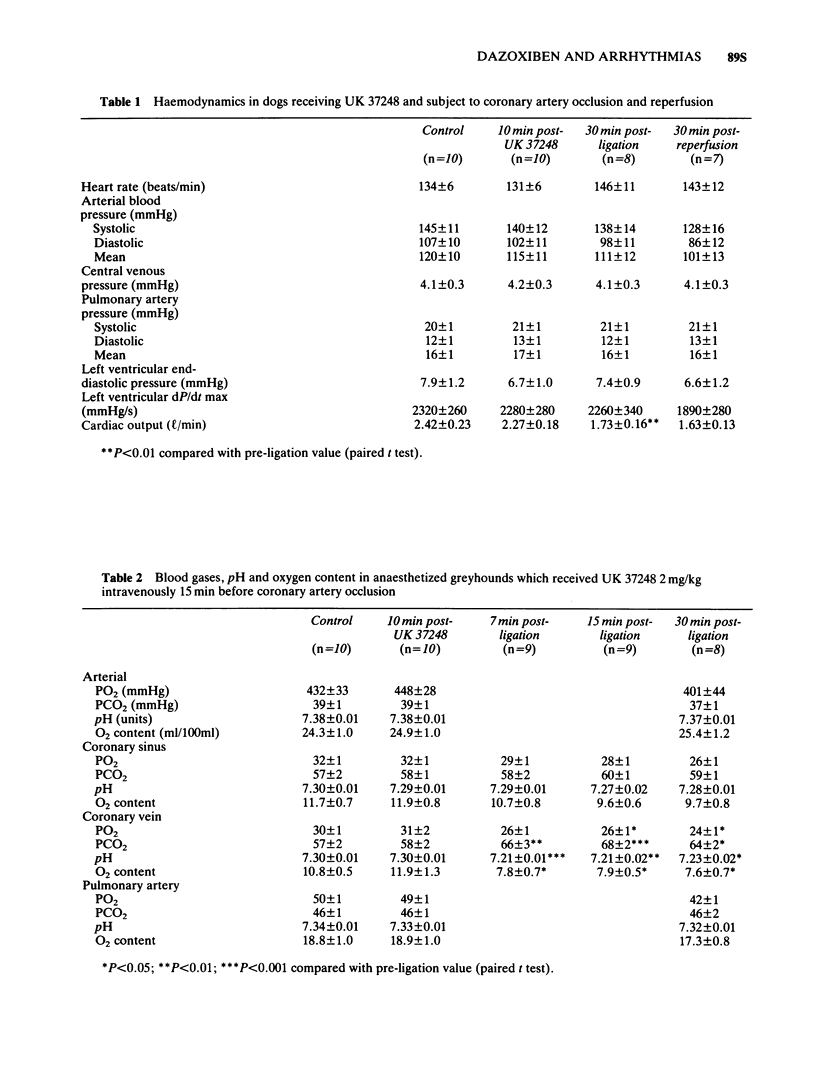
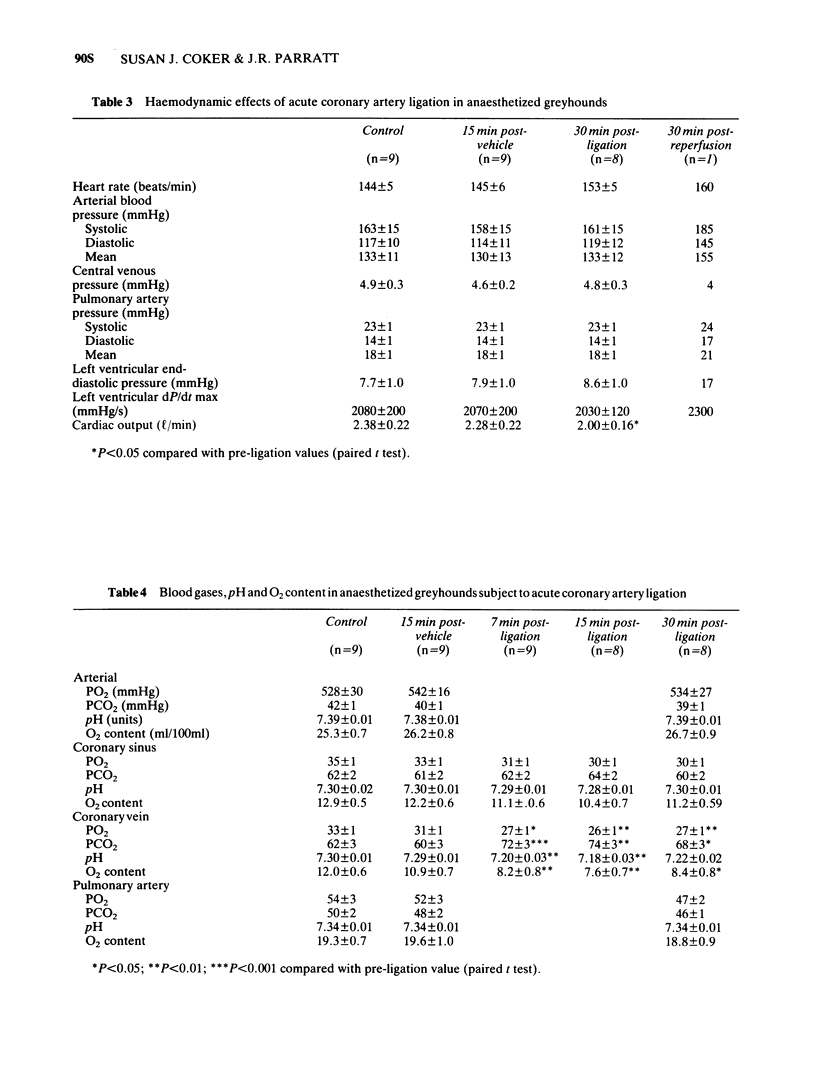
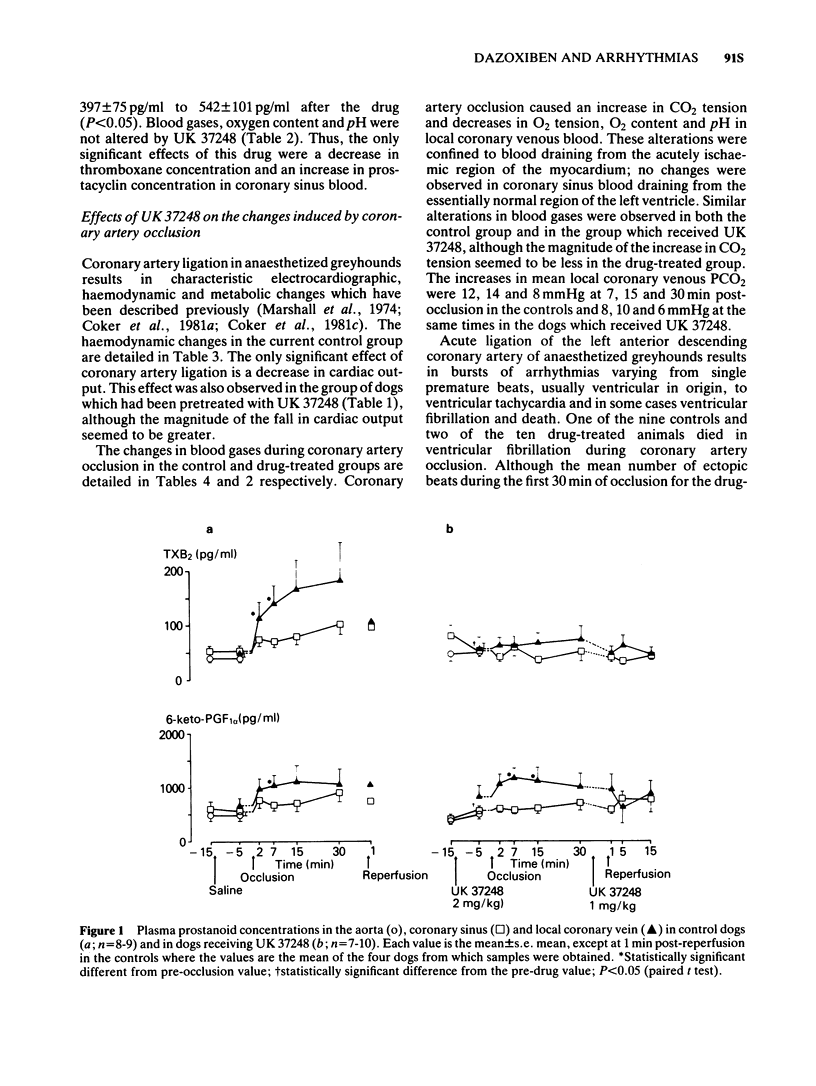
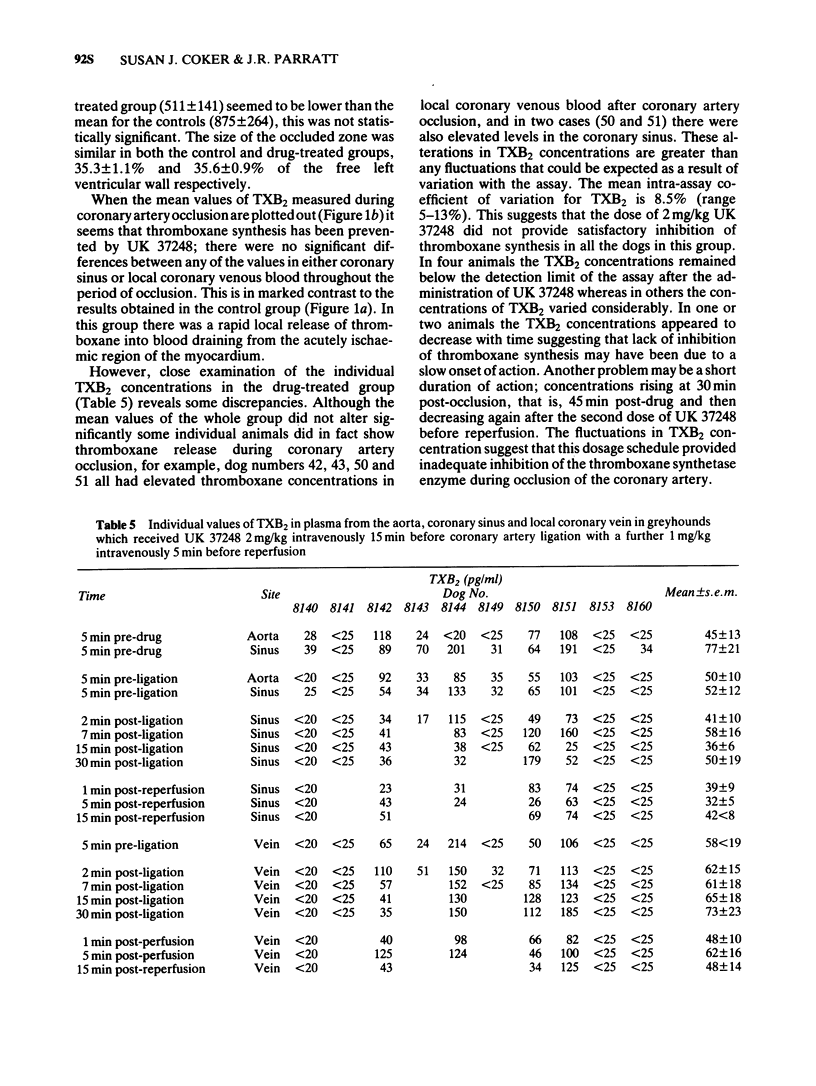
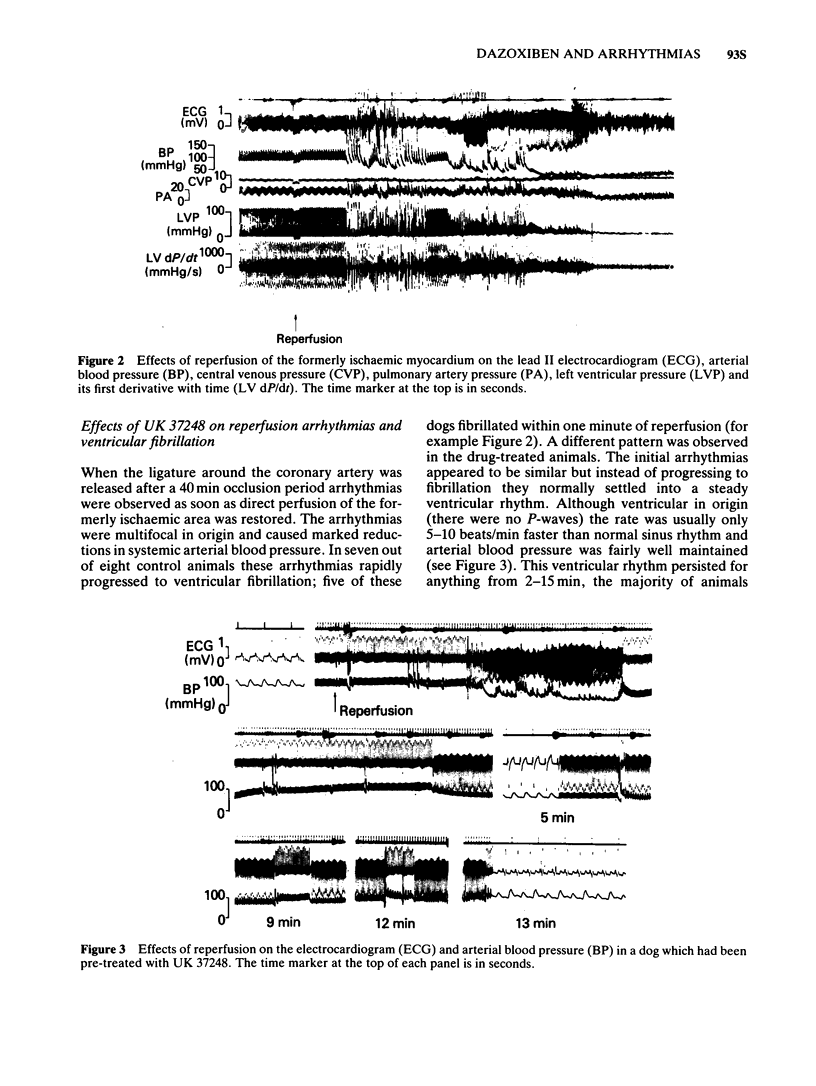
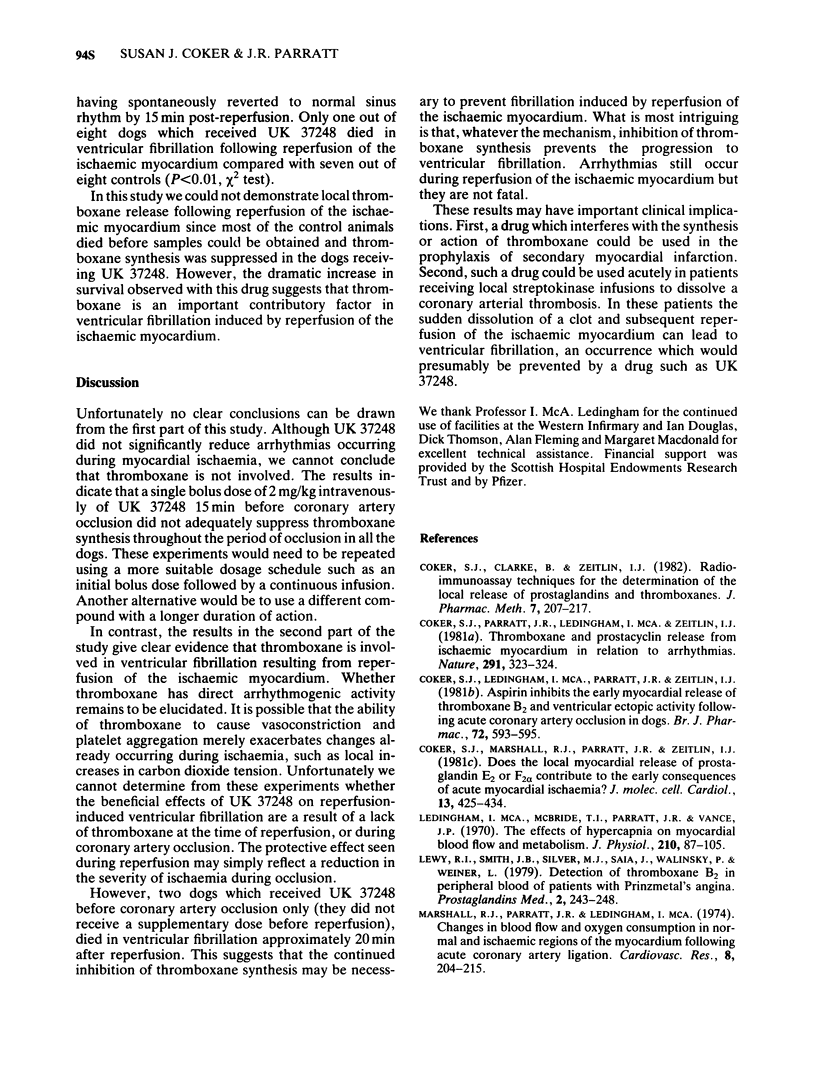
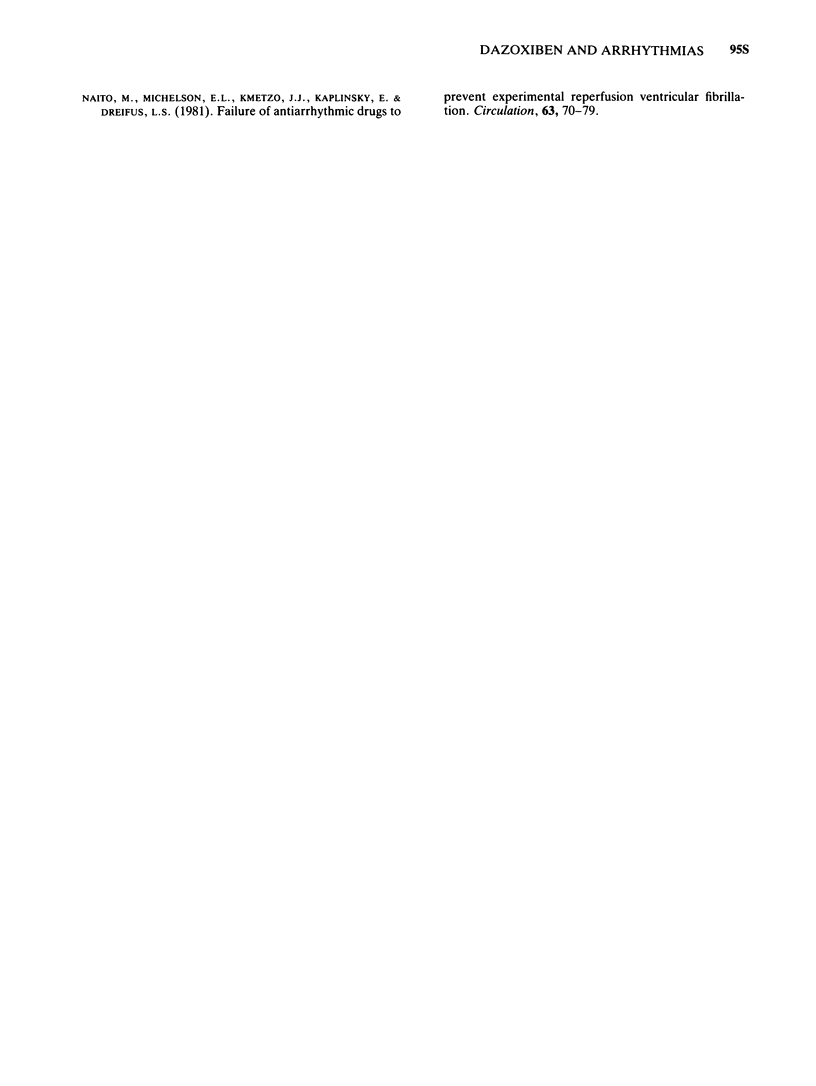
Selected References
These references are in PubMed. This may not be the complete list of references from this article.
- Coker S. J., Clarke B., Zeitlin I. J. Radioimmunoassay techniques for the determination of the local release of prostaglandins and thromboxanes. J Pharmacol Methods. 1982 May;7(3):207–217. doi: 10.1016/0160-5402(82)90037-7. [DOI] [PubMed] [Google Scholar]
- Coker S. J., Ledingham I. M., Parratt J. R., Zeitlin I. J. Aspirin inhibits the early myocardial release of thromboxane B2 and ventricular ectopic activity following acute coronary artery occlusion in dogs. Br J Pharmacol. 1981 Apr;72(4):593–595. doi: 10.1111/j.1476-5381.1981.tb09138.x. [DOI] [PMC free article] [PubMed] [Google Scholar]
- Coker S. J., Marshall R. J., Parratt J. R., Zeitlin I. J. Does the local myocardial release of prostaglandin E2 or F2alpha contribute to the early consequences of acute myocardial ischaemia? J Mol Cell Cardiol. 1981 Apr;13(4):425–434. doi: 10.1016/0022-2828(81)90284-4. [DOI] [PubMed] [Google Scholar]
- Coker S. J., Parratt J. R., Ledingham I. M., Zeitlin I. J. Thromboxane and prostacyclin release from ischaemic myocardium in relation to arrhythmias. Nature. 1981 May 28;291(5813):323–324. doi: 10.1038/291323a0. [DOI] [PubMed] [Google Scholar]
- Ledingham I. M., McBride T. I., Parratt J. R., Vance J. P. The effect of hypercapnia on myocardial blood flow and metabolism. J Physiol. 1970 Sep;210(1):87–105. doi: 10.1113/jphysiol.1970.sp009197. [DOI] [PMC free article] [PubMed] [Google Scholar]
- Lewy R. I., Smith J. B., Silver M. J., Saia J., Walinsky P., Wiener L. Detection of thromboxane B2 in peripheral blood of patients with Prinzmetal's angina. Prostaglandins Med. 1979 Apr;2(4):243–248. doi: 10.1016/0161-4630(79)90059-4. [DOI] [PubMed] [Google Scholar]
- Marshall R. J., Parratt J. R., Ledingham I. M. Changes in blood flow and oxygen consumption in normal and ischaemic regions of the myocardium following acute coronary artery ligation. Cardiovasc Res. 1974 Mar;8(2):204–215. doi: 10.1093/cvr/8.2.204. [DOI] [PubMed] [Google Scholar]
- Naito M., Michelson E. L., Kmetzo J. J., Kaplinsky E., Dreifus L. S. Failure of antiarrhythmic drugs to prevent experimental reperfusion ventricular fibrillation. Circulation. 1981 Jan;63(1):70–79. doi: 10.1161/01.cir.63.1.70. [DOI] [PubMed] [Google Scholar]


